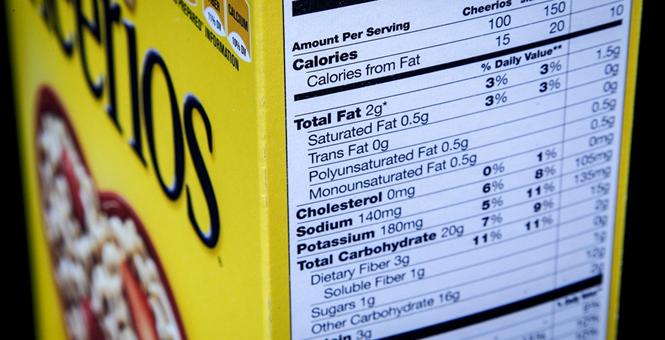-
Tips for becoming a good boxer - November 6, 2020
-
7 expert tips for making your hens night a memorable one - November 6, 2020
-
5 reasons to host your Christmas party on a cruise boat - November 6, 2020
-
What to do when you’re charged with a crime - November 6, 2020
-
Should you get one or multiple dogs? Here’s all you need to know - November 3, 2020
-
A Guide: How to Build Your Very Own Magic Mirror - February 14, 2019
-
Our Top Inspirational Baseball Stars - November 24, 2018
-
Five Tech Tools That Will Help You Turn Your Blog into a Business - November 24, 2018
-
How to Indulge on Vacation without Expanding Your Waist - November 9, 2018
-
5 Strategies for Businesses to Appeal to Today’s Increasingly Mobile-Crazed Customers - November 9, 2018
Labels on more than 800000 products are changing
The new label makes it easier for consumers to see the calories, now big and bold at the top.
Advertisement
“I am thrilled that the FDA has finalized a new and improved Nutrition Facts label that will be on food products nationwide”, said First Lady Michelle Obama in a statement.
Labels on packaged food and drinks that Americans have relied on for 20 years to help them choose meals and snacks will be modernized to reflect changes in eating habits that have accompanied epidemics of obesity and diabetes.
That’s because numerous new labels will have to reflect what people really eat, not what they should eat.
The government is playing catch-up with trends in eating habits and scientific research that have taken place since 1993, when food labels became standard.
“Calories from fat” will be removed because the type of fat is more important than the amount.
Large sodas, such as a 20-ounce Coca-Cola, that fall between one and two serving sizes will be listed as one serving, which is how people usually consume them.
The labels will also include a new “percent daily value” for sugars, meaning the percentage of a person’s recommended daily intake of added sugars in that particular food item.
Updated recommended daily values for nutrients like sodium, dietary fiber, and vitamin D, consistent with new recommendations. Since the calculations are based on an average diet of 2,000 calories, that means people should get no more than 200 calories of added sugars a day.
The FDA’s decision to break out added sugar from the total sugar count already on packaging culminates a yearslong push by the Obama administration into stiff opposition from food and beverage companies, which say there is no difference between naturally present sugars and added sugars.
Nutrients that Americans don’t get enough of, such as vitamin D, potassium, calcium and iron, will continue to be required. Vitamin C and Vitamin A listings are no longer required but can be included.
Advertisement
The agency first proposed updating the label in March 2014, and issued a supplemental proposed rule last July after weighing comments from the public. Because almost 80 percent of the sodium Americans eat comes from processed, prepackaged and restaurant foods, we are hopeful that the newly lowered DV for sodium, along with the anticipated voluntary sodium targets for industry, will encourage manufacturers to lower the sodium content of their foods. While some companies have fought the new line for added sugar, others have supported it.





























